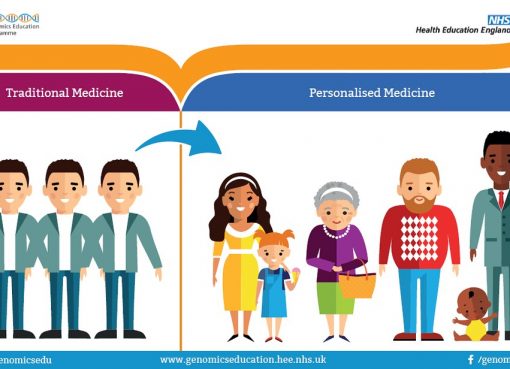Simanta Koushik and Lukumoni Buragohain
Department of Animal Biotechnology
College of Veterinary Science, AAU
Khanapara, Guwahati-22
INTRODUCTION:
Artificial cells are engineered particles that mimic one or many characters of a biological cell. They can be integral biological cell imitators with cell-like structures or engineered materials which exhibit some of the key characteristics of living cells. Some of the particles qualified as artificial cells are liposomes, polymersomes, nanoparticles, microcapsules and many other particles. In 1960, Thomas Chang of McGill University developed the artificial cells for the first time. These cells consisted of ultrathin membranes of nylon, cross-linked by protein and were micron-sized containing enzymes, hemoglobin, magnetic materials, adsorbents and proteins.
COMPOSITION OF ARTIFICIAL CELLS
Membrane of artificial cells: The membrane surrounding an artificial cell can be either biological or synthetic. Some membranes have proteins on their surfaces such as enzymes, hemoglobin, antigens or antibody while others may contain transport carriers or selective channels. Membranes for artificial cells can be made of simple polymers, cross-linked proteins, lipid membranes or polymer-lipid complexes. Further, membranes can be designed to display surface proteins such as albumin, antigens, Na/K-ATPase carriers or ion channels. Commonly used materials for the production of membranes include hydrogel polymers like alginate, cellulose and thermoplastic polymers such as hydroxy-ethyl methacrylate-methyl methacrylate (HEMA-MMA), poly-acrylonitrile-polyvinyl chloride (PAN-PVC).
Interior of artificial cells: The interior of the artificial cells contains a variety of bioactive materials such as enzymes, drugs, microbes, vaccines, DNA, hormones, proteins, nanoparticles, magnetic materials etc. which are enclosed within the polymer. Besides, artificial cells’ interior may also contain combination of these materials.
CLASSIFICATION:
Artificial cells can be classified into two main categories based upon their intrinsic characteristics- Typical (artificial cells in a full sense) and Non-typical (cell-mimics).
- Typical artificial cells: This type of artificial cells should possess natural cell-like structures and exhibit at least some of the key characteristics of living biological cells such as to evolve, to self-reproduce and to metabolize. Moreover, typical artificial cells should also possess following features of biological cells- a stable and semi-permeable membrane, molecules that carry the genetic information (DNA or RNA) and metabolism systems. Gardner and his co-workers designed a lipid-bound protocell that could synthesize complex carbohydrates thereby enabling Vibrio harveyi to initiate a quorum sensing mechanism and cause a bioluminescent response.
- Non-typical artificial cells: These are engineered materials that mimic one or more features of biological cells and have no restrictions in structure. This type of artificial cells are more precisely called ‘cell mimics’ that imitate some surface characteristics, shapes, functions and morphology of biological cells. Doshi and co-workers synthesized polymer particles (polystyrene) with RBC-like shape, size and mechanical flexibility. In 2015, Huang with his group replicated the unique surface topography of macrophages by using silica and the magnetic nanoparticles.
CONSTRUCTION OF ARTIFICIAL CELLS:
Artificial cells are constructed by two fundamental approaches which include: top-down and bottom-up approaches.
- Top-down approach: In this approach, artificial cells are generated by reducing or simplifying the genome of a living cell. Inspiration for scientists to develop “Artificial cells” started only when Venter and colleagues discovered that the parasitic bacterium Mycoplasma genitalium has only 517 genes. In 2004, Gil and his co-workers proposed that minimal gene set required for maintaining the living bacterial cell could be further reduced to 150 genes. However, for the survival of these cells, corresponding compounds should be present in the environment. Despite this fact, there is still a long way to engineer, alter and create more complex artificial life due to the complexity of genomes. Along with accuracy of genome engineering, high cost for genome analysis, modification and synthesis are obstacles for construction of artificial cells with top-down approach. So improving the accuracy and lowering the cost of genome engineering are urgently needed for the future development of artificial cells by the top-down method.
- Bottom-up approach: Instead of starting from an existing living organism, it aims to create a cell by assembling a stack of non-biotic components. The artificial cells designed from the bottom-up approach contain only minimal components required to perform the desired functions. It can overcome the shortcomings of top-down approach as it is simpler and more controllable. Modifying existing organisms is cumbersome and may bring some undesirable results, as seen in the top-down approach. Three basic elements needed for the construction of a ‘living’ artificial cell using a bottom-up approach are information-carrying molecules (RNA or DNA), cell membranes and metabolism systems.
APPLICATIONS OF ARTFICIAL CELLS
Hemoperfusion: It is a method of filtering blood outside the body of a patient to remove a toxin. Clinically, artificial cells were first used in hemoperfusion by encapsulation of activated charcoal because activated charcoal or other absorbing materials can remove toxic substances from blood. Toxins or drugs in blood circulation diffuse into the artificial cells and are retained by the absorbent present inside. It can be used in poisoning or overdose cases, in liver or kidney failure as artificial cells can be used to carry out part of the function of these organs.
Oxygen aarrier : Artificial cells containing only hemoglobin (Hb) or RBC enzymes with Hb can be used as oxygen carriers. This type of cells possess stable cellular membranes and is more durable and can be stored for longer duration than the natural RBCs which can be stored up to 42 days at 4°C. It is also useful in blood typing and matching. It can be sterilized thereby the risk of transmission of diseases such as AIDS through blood transfusion can be eliminated.
Drug release and delivery: Artificial cells can be used to deliver drugs in the targeted site. It has the ability to release the drugs slowly once within the tissues. They can be used for drug delivery since their contents can diffuse out of the membrane or can be engulfed and digested by host target cell. The size of artificial cell systems used for drug delivery ranges from micro to nano-dimensions and are known by different terms such as liposomes, polymersomes, nanoparticles, nanotubules, etc.
Enzyme therapy: One of the applications of artificial cells is in enzyme therapy and the first enzyme studied under artificial cell encapsulation was asparaginase used for the treatment of lymphosarcoma in mice. Enzymes incorporated inside artificial cells carry out their function for a much longer period compared to free enzymes. Artificial cell enzyme therapy is also helpful for the activation of prodrugs like ifosfamide in treatment of certain cancers.
Probiotic delivery: The oral ingestion of live bacterial colonies is currently used to treat certain gastro-intestinal diseases. This mechanism is believed to have two main effects- nutritional effect, in which the bacteria compete with toxin producing bacteria and sanitary effect, which stimulates immune response. The oral delivery of live bacterial cultures is always a challenging task. Thus artificial cells can solve this issue by its selective or long term release. Membranes that have been proven successful for bacterial delivery include cellulose acetate and alginate.
Liver therapy: Artificial hepatocytes were demonstrated to be feasible and effective in providing normal liver function in liver disease animal models. Hepatocytes are encapsulated in alginate and polylysine. The shorter longevity of artificial hepatocytes after transplantation is the main obstacles encountered. Hepatocytes co-encapsulated with stem cells show greater viability after implantation and are helpful in liver regeneration.
Gene therapy: Gene therapy relies heavily on viral vectors which raises concerns about insertional mutagenesis and leukemia. Also there are low efficiency and poor tissue targeting issues in respect of viral vectors when given systemically. To overcome these issues, artificial cells are used as non-viral vector for treatment of genetic diseases.
Apart from these applications, some other potential benefits of artificial cells are:
- Provide plausible theory for the origin of life.
- Provide a less interfering way to investigate and understand the cellular life.
- Can replace engineered organisms to produce pharmaceuticals and biofuels.
- Addition of new functions that are absent in biological cells.
CONCLUSION:
With the advancement in science and technology, novel and promising artificial cell types with improve quality is expected in future. Although scientific community is continuously working to achieve impressive progress in this field, still there is a wide gap between artificial cells and biological cells. Moreover, other issues like uptake of nutrients, movement, artificial cellular networks, replication and communication of artificial cells needs to be addressed in future. Undoubtedly, further development of artificial cells will bring attractive opportunities to the field of medicine and biotechnology.
REFERENCES:
Cello, J.; Paul, A.V. and Wimmer, E. (2002). Chemical synthesis of poliovirus cDNA: generation of infectious virus in the absence of natural template. Science. 297(5583): 1016-8.
Chang, T.M. (1996). Removal of endogenous and exogenous toxins by a microencapsulated absorbent. Can. J. Physiol. Pharmacol. 47(12): 1043-5.
Doshi, N.; Alisar, S.; Bhaskar, S.; Lahann, J. and Mitragotri, S. (2009). Red blood cell-mimicking synthetic biomaterial particles. PNAS. 106(51): 21495-21499.
Gardner, P.M.; Winzer, K. and Davis, B.G. (2009). Sugar synthesis in a protocellular model leads to a cell signalling response in bacteria. Nat. Chem. 1: 377–383. doi: 10.1038/nchem.296.
Gebicki, J.M. and Hicks, M. (1973). Ufasomes are stable particles surrounded by unsaturated fatty acid membranes Nature. 243(5404): 232-34.
Gil, R.; Silva, F.J.; Pereto, J. and Moya, A. (2004). Determination of the core of a minimal bacterial gene set. Microbiol. Mol. Biol. Rev. 68(3): 518-37.
Haghgooie, R.; Toner, M. and Doyle, S. (2010). Squishy non-spherical hydrogel microparticles. Macromol. Rapid Commun. 31(2): 128-34.
Huang, C.; Yang, G.; Ha, Q.; Meng, J. and Wang, S. (2015). Multifunctional “smart” particles engineered from live immunocytes: toward capture and release of cancer cells. Adv Mater. 27(2): 310-313.
Kaehr, B.; Ferris, J.P. and Oparin, A.I. (2012). Cellular complexity captured in durable silica biocomposites. Proc. Natl. Acad. Sci. USA. 109(43): 17336.
Lee, E.S.;Kim, D.; Youn, YS.; Oh, K.T. and Bae, Y.H. (2008). A virus-mimetic nanogel vehicle. Angew Chem. Int. Ed. Engl. 47(13): 2418.
Mann, S. (2012). Systems of creation: the emergence of life from nonliving matter. Acc. Chem. Res. 45(12): 2131-41.
Merkel, T.J.; Shortridge, K.F. and Roberts, P.C. (2011). Artificial cells: from basic science to applications. Proc. Natl. Acad. Sci. 108(2): 586.
Szostak, J.W. and Zhu, T.F. (2009). Coupled growth and division of model protocell membranes. J. Am. Chem. Soc. 131(15): 5705-13.
Venter, C.; Daniel, G.; Gibson,.J.I.; Glass,,C. and Lartigue,,V.N.N. (2010). Creation of a Bacterial Cell Controlled by a Chemically Synthesized Genome. Science. 329(5987): 52-56.




